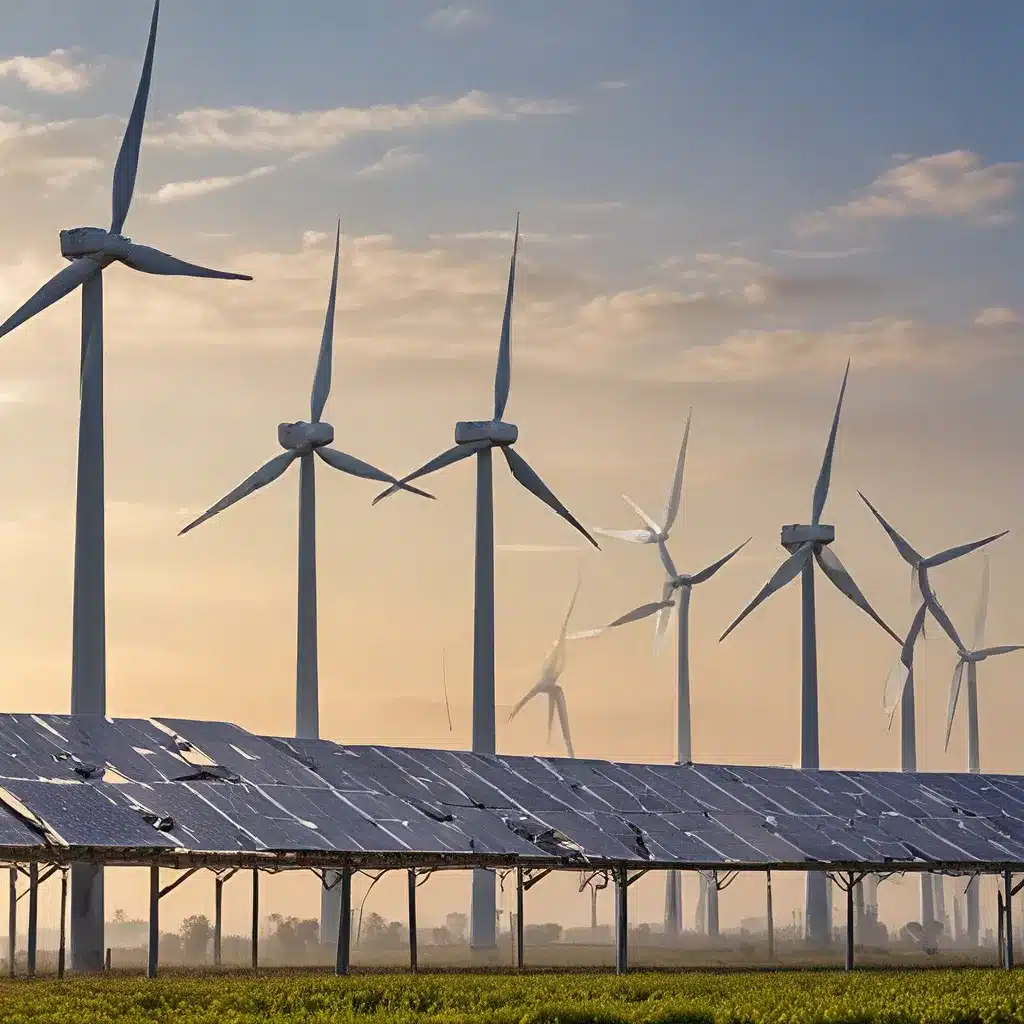
As someone deeply passionate about the future of renewable energy, I’ve been closely following the evolving regulatory landscape that’s shaping this dynamic industry. It’s an exciting time, with governments around the world ramping up efforts to drive the transition to clean, sustainable power sources.
The Rise of Renewable Energy Targets
One of the most significant developments in recent years has been the Australian federal government’s commitment to ambitious renewable energy targets, both domestically and on the international stage. This bold move signals a clear recognition of the urgent need to address climate change and reduce emissions.
At the heart of this push is the hydrogen sector, which is positioning itself to play an increasingly crucial role in Australia’s transition to a low-emissions economy. Clean hydrogen and hydrogen-based fuels are being hailed as credible alternatives that can facilitate decarbonization, particularly in hard-to-abate sectors like transport, shipping, and manufacturing.
Regulatory Reforms and Industry Acceleration
To capitalize on this momentum, Australian governments at the federal, state, and territory levels have prioritized the implementation of regulatory initiatives and the funding of programs to accelerate the development of the hydrogen industry across the country. These new regulatory reforms have been announced in the context of a pressing need to develop clean hydrogen production projects at a large scale and to produce hydrogen at commercially viable prices.
Industry participants will undoubtedly benefit from understanding the key aspects of these regulatory changes, as they provide valuable opportunities to further engage in the rapidly growing Australian hydrogen industry. The government’s policy and funding initiatives are aimed at positioning Australia as one of the largest global suppliers of renewable hydrogen by 2030.
The International Energy Agency’s Role
The International Energy Agency (IEA) has also been a key player in the renewable energy landscape, serving as a leader in the global dialogue on energy. As the IEA celebrates its 50th anniversary in 2024, it continues to provide authoritative data, analysis, and insights that help shape the energy policies and strategies of countries around the world.
Through its various flagship reports, the IEA offers a comprehensive understanding of the global energy system, including the role of fossil fuels, renewables, electricity, low-emission fuels, and various sectors like transport, industry, and buildings. This wealth of information is invaluable for industry participants, policymakers, and anyone interested in the future of energy.
Navigating the Regulatory Landscape
While the regulatory environment surrounding renewable energy can be complex, it’s crucial for industry players to stay informed and adapt to the evolving landscape. The U.S. Environmental Protection Agency (EPA) has also played a vital role in this space, providing a wealth of resources and guidance on policies and regulations related to green power markets.
By understanding the key regulatory initiatives, funding programs, and industry trends, businesses and investors can identify opportunities to participate in the growing renewable energy sector. This could involve exploring hydrogen production projects, investing in renewable energy infrastructure, or developing innovative technologies that support the transition to a sustainable energy future.
The Road Ahead: Challenges and Opportunities
Of course, the path to a renewable energy-powered future is not without its challenges. There are ongoing debates and uncertainties around the best strategies for decarbonization, the scalability of emerging technologies, and the potential trade-offs between environmental, economic, and social considerations.
Some experts believe that while clean hydrogen and hydrogen-based fuels hold great promise, there are still hurdles to overcome in terms of production costs and infrastructure development. Others suggest that a diverse portfolio of renewable energy solutions, including solar, wind, and geothermal, will be necessary to achieve true energy independence and sustainability.
Regardless of the specific approaches, one thing is clear: the transition to renewable energy is well underway, and the regulatory landscape will continue to evolve to support and accelerate this critical shift. By staying informed, embracing innovation, and balancing diverse perspectives, we can collectively navigate the challenges and seize the opportunities that lie ahead.
As the Firewinder team can attest, the renewable energy industry is a dynamic and rapidly changing space, full of both challenges and exciting possibilities. By understanding the regulatory frameworks and policy initiatives that are shaping the sector, we can position ourselves to make a meaningful contribution to the clean energy revolution.
So, whether you’re a renewable energy developer, an investor, or simply someone passionate about the future of our planet, I encourage you to dive deeper into this fascinating and rapidly evolving landscape. Who knows what innovative solutions and game-changing breakthroughs are just around the corner?

